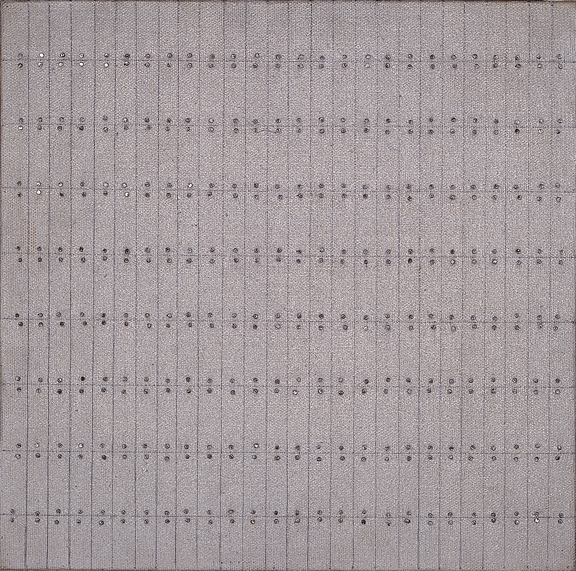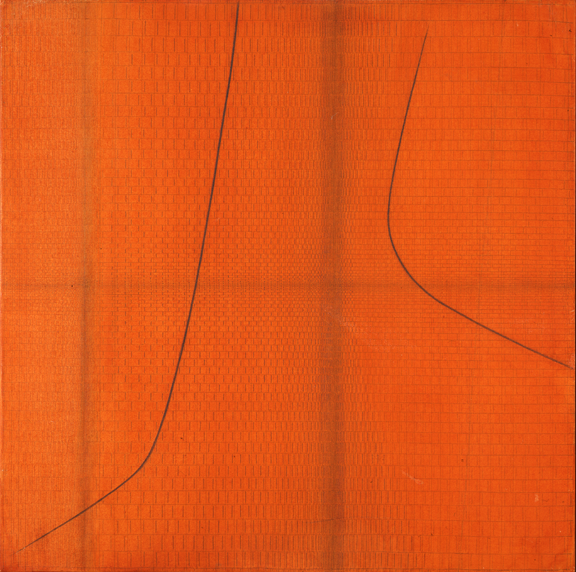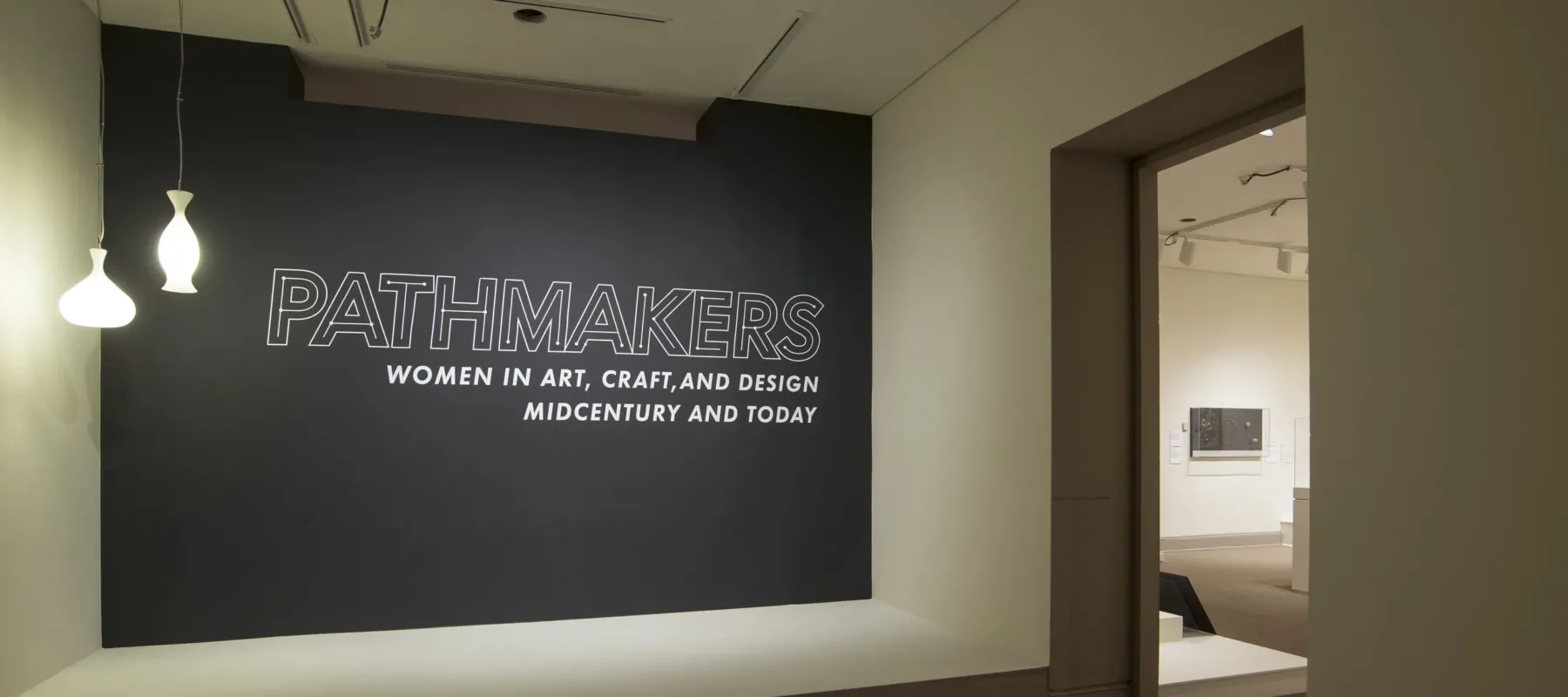Dynamic women designers and artists from the mid-20th century and today create innovative designs, maintain craft traditions, and incorporate new aesthetics into fine art in Pathmakers: Women in Art, Craft, and Design, Midcentury and Today, now on view at the National Museum of Women in the Arts. Each week, compare and draw parallels between works on view in Pathmakers and NMWA collection favorites.
On view in Pathmakers
Agnes Martin, The Wall #2, 1962
The Wall #2 balances drawn grids with subtle washes of color. Martin’s signature compositions composed of measured grids are commonly associated with Minimalism, but the artist herself preferred the “Abstract Expressionist” label. The formal precision of her works belies their spiritual quality.

Who made it?
Born in Saskatchewan, Canada, Agnes Martin (b. 1912) is revered for her abstracted works. Though her paintings are based on a rational grid system, she imbued them with personal spiritual content. In 1967, Martin moved to New Mexico, where she lived in reclusion for three decades. Within that period she stopped painting for seven years. Martin stated, “The best things in life happen to you when you’re alone.” She began painting again in 1974, exhibiting a stylistic shift from pale shades to brighter hues.
How was it made?
The Wall #2 exemplifies Martin’s spare aesthetic. Although meticulously placed, the small nails securing the canvas are marginally offset from one another, and the hand-drawn lines waver slightly. Visible handwork differentiates Martin from her hard-edged Minimalist contemporaries. The nails and lines generate a sense of stability, an almost hypnotic vibration of static elements. The steady rhythm of the dot-dash pattern of The Wall #2 instills a meditative sensibility that is representative of Martin’s oeuvre.
Collection connection

In NMWA’s collection, “Misure” Doppio Ritmo (“Measures” Double Rhythm) (1967) by Italian modernist Bice Lazzari is also based on precise, geometric lines. Colored with swaths of red-orange tempera paint, the composition is activated by two curved lines, which dance and dive across the canvas. The background of faint lines and tight boxes give “Misure” Doppio Ritmo an almost reptilian surface texture. Lazzari was often inspired by decorative arts and musical notes. Like Martin’s work, Lazzari’s painting has a hand-drawn quality.
Visit the museum and explore Pathmakers, on view through February 28, 2016.
